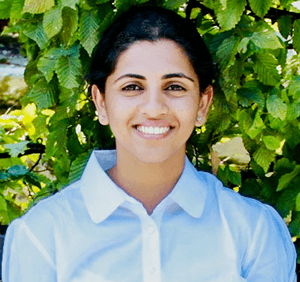A Novel, Clinically Translatable Method for Metabolic Imaging of Astrocytoma Patients
Astrocytomas are tumors that come from astrocytes, known as star-shaped cells that make up the "glue-like" or supportive tissue of the brain, and they can appear in various parts of the brain and nervous system. The alternative lengthening of telomeres (ALT) pathway is used by some cancers, including astrocytomas, to prevent the telomere shortening that accompanies tumor proliferation.
Recently, investigators from the Cancer Metabolic Imaging and Therapy Lab at the UC San Francisco Department of Radiology and Biomedical Imaging teamed up with the Department of Neurosurgery to identify metabolic alterations linked to this ALT pathway that can be exploited for non-invasive deuterium magnetic resonance spectroscopy (2H-MRS)-based imaging of astrocytomas in vivo. Their findings were published in Neuro-Oncology, the journal for the Society for Neuro-Oncology.
 "Our study was successful because we were able to mechanistically link the ALT pathway to elevated glycolytic flux, and we were also able to demonstrate the ability of [6,6'-2H]-glucose to non-invasively assess tumor burden and early response to therapy in astrocytomas," says Pavithra Viswanath, PhD, co-principal investigator of the lab and corresponding author on this study. "Our findings point to a novel, clinically translatable method for metabolic imaging of astrocytoma patients."
"Our study was successful because we were able to mechanistically link the ALT pathway to elevated glycolytic flux, and we were also able to demonstrate the ability of [6,6'-2H]-glucose to non-invasively assess tumor burden and early response to therapy in astrocytomas," says Pavithra Viswanath, PhD, co-principal investigator of the lab and corresponding author on this study. "Our findings point to a novel, clinically translatable method for metabolic imaging of astrocytoma patients."
Dr. Viswanath and Sabrina Ronen, PhD are co-PIs of Cancer Metabolic Imaging and Therapy Lab, and their overall vision is to harness insights from tumor genetics, epigenetics and biology to drive the preclinical development of novel, translational metabolic imaging biomarkers that will ultimately benefit patients by enabling the non-invasive assessment of tumor burden and response to therapy. They also aim to pinpoint metabolic vulnerabilities that can be exploited for the development of novel therapeutic agents.
"We work closely with clinical colleagues at UCSF, including Neurosurgery, to enable clinical translation of the metabolic imaging methods, like 2H-MRS, and therapeutics that emerge from our preclinical studies," says Dr. Viswanath.
Lab members Anne Marie Gillespie (lab manager), Georgios Batsios, PhD and Celine Taglang, PhD (Specialists), Donghyun Hong, PhD (postdoctoral scholar) and Mers Tran (staff research associate) contributed to this study. Collaborators from UCSF Neurosurgery include Russell Pieper, PhD, Director of Basic Science in the UCSF Brain Tumor Center and Joydeep Mukherjee, assistant researcher. H. Artee Luchman, PhD, from the Hotchkiss Brain Institute at the University of Calgary also contributed.
